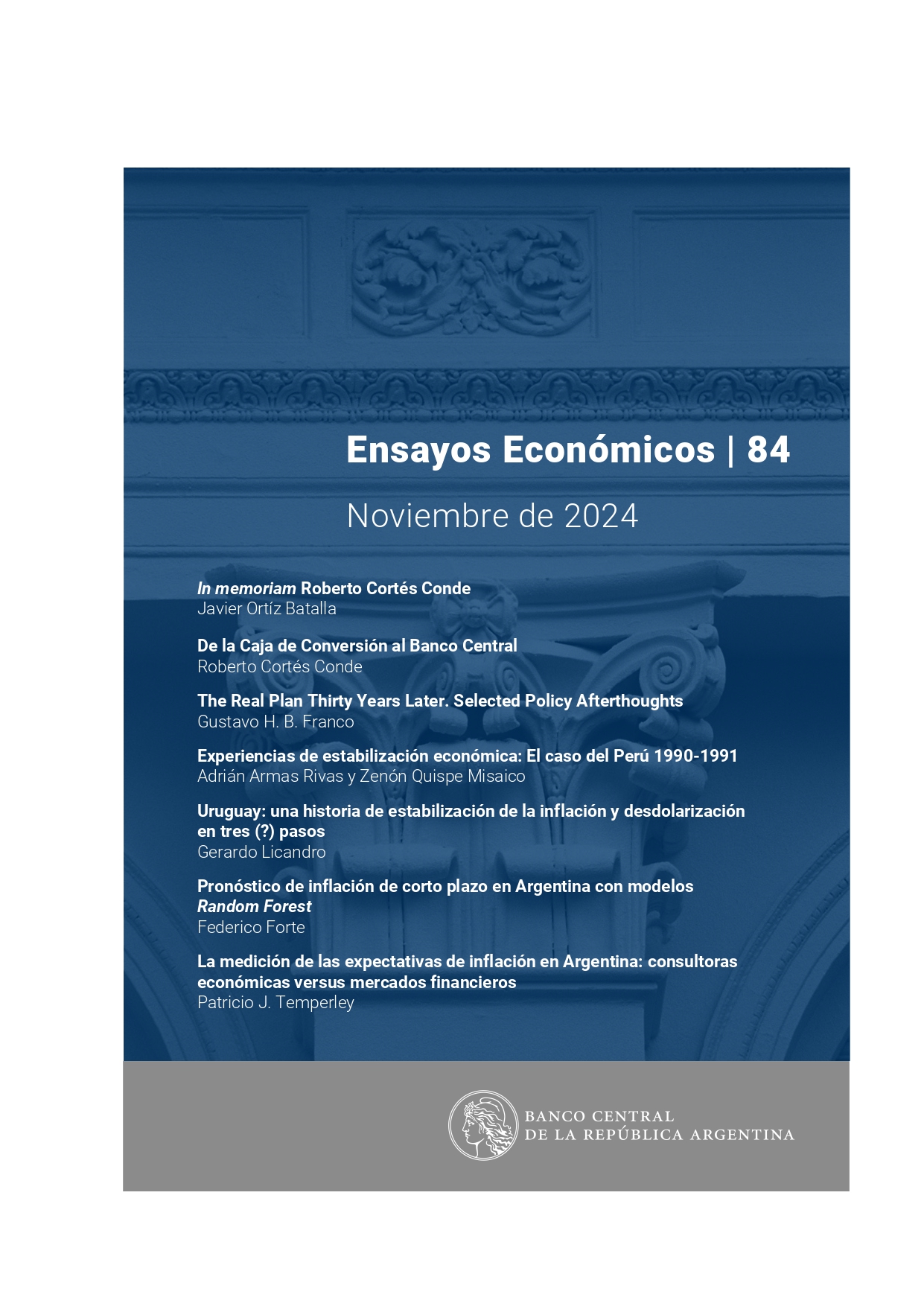From the Currency Board to the Central Bank
Keywords:
Argentina, Central banks, Currency Board, Economic depression, Economic policy, Monetary institutions, The Great DepressionAbstract
This paper analyzes the 1930 economic crisis in Argentina, highlighting its causes, development, and policy responses, in comparison to the events in the countries studied by Bernanke and James (1990). Unlike the U.S. crisis, marked by a stock market and financial collapse, the Argentine crisis was driven by the collapse of agricultural prices, which severely impacted both public and private revenues, triggering problems in the banking system and leading to a widespread recession. The study examines the measures adopted by the governments of Irigoyen, Uriburu, and Justo between 1929 and 1935, to determine whether these responses aimed to mitigate the contractionary effects or were pragmatic reactions to the severity of the events. The effects of the crisis in Argentina are compared with those in other countries. Additionally, the paper investigates the role of existing monetary institutions, particularly the Caja de Conversión, with its significant changes in 1931 and 1932, and the Central Bank established in 1935.
JEL Classification: N10; N16




